Your Backyard Wildlife Habitat: Sustenance Through the Summer
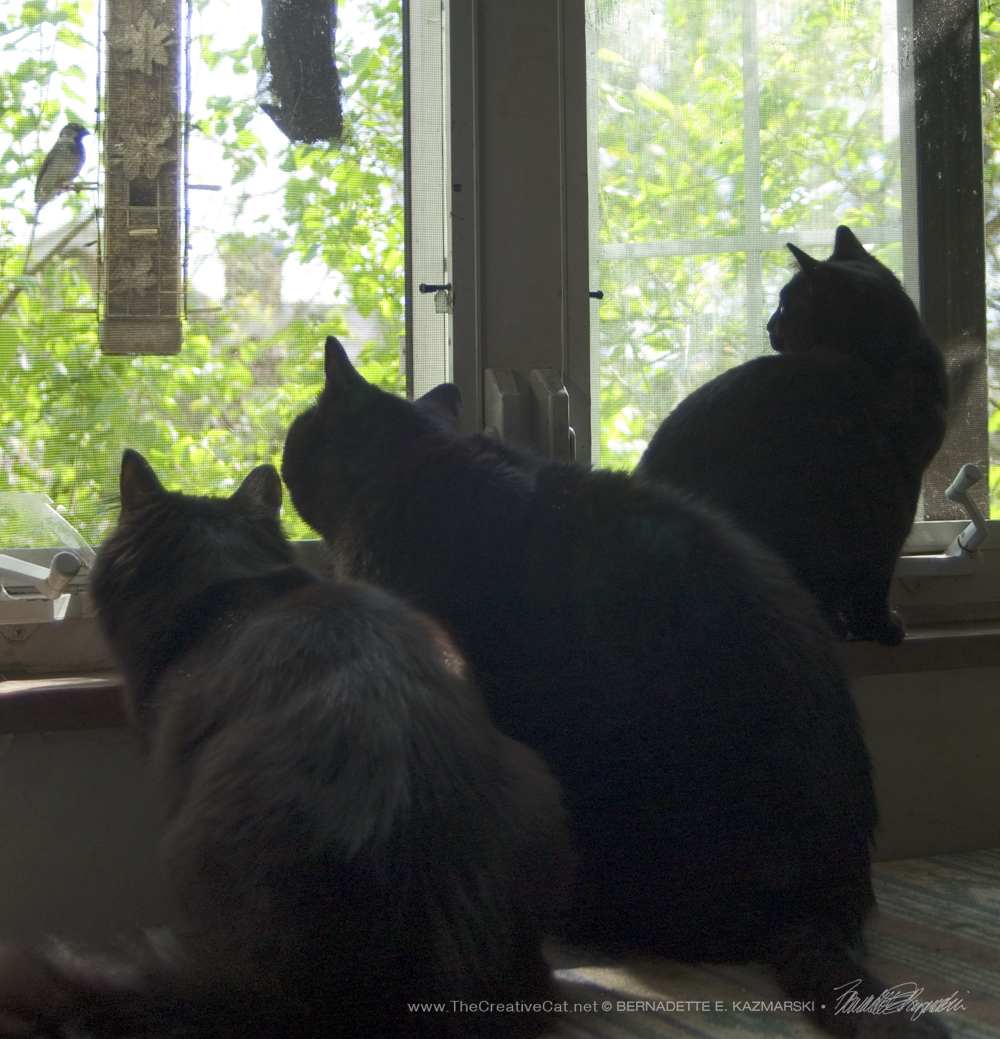
EVEN THOUGH YOU have a yard full of native plants that will bloom and produce seeds in succession, trees and shrubs for nesting, and care for it all in a way that welcomes birds, butterflies and lots native animals, it’s still a good idea to put out a little bird seed and a few watering holes for all those who come to visit.
. . . . . . .
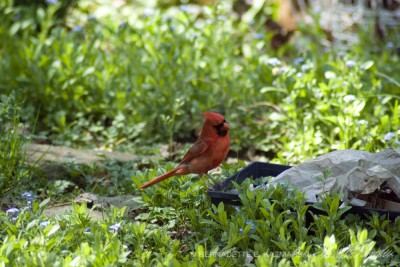
I feed birds year-round, and I always credit them with keeping vegetable and flower pests under control. All those species of aphids, mites and beetles don’t stand a chance with a healthy varied flock of birds at the ready. I know they also peck around through the grass eating fleas. Those starlings and grackles who march around on your lawn? They’ll happily eat fleas. Robins in the spring? Fleas don’t stand a chance. Songbirds that eat insects? Fleas are a natural part of their diet.
And not just flea and garden pest control, but mosquitoes, gnats and other biting insects that are at least a nuisance and at worst carry potentially dangerous diseases are part of the natural diet for birds, toads, snakes, spiders and other beneficial predators who can keep your habitat in balance.
Right now, as the wildflowers of late spring are fading and those that will bloom through summer begin, natural foods aren’t yet plentiful, and some days can be wickedly hot. If you’ve maintained a wild area in your backyard where birds can recognize their native foods, birds will find you, stop for a meal and a bath and a drink of water. Amphibians and reptiles will find quiet places to wait for prey where you will never see them. Some of them will decide to stay.
Ways to feed
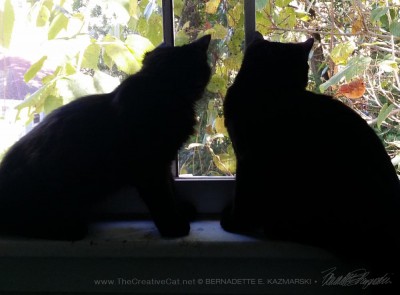
Because there are native plants and insects on the run, you don’t need to feed nearly as much as you do in winter. Choose two or three shady, protected places to set out bird feeders for your biggest crowd of beneficial predators. Use as much black oil sunflower seed as possible since it’s the universal favorite of birds which commonly visit feeders and gives the most energy for the energy expended to open the seed and eat it and it’s easily recognizable for birds just passing by. In fact, those silly “bird bells” you see in the grocery store, bell-shaped clumps of seeds made to hang outdoors, are highly effective to attract and feed birds. Place them either where you want a feeder to be hung later, or where you see birds gathering, and if you want to feed birds in a particular place, move it slowly to that spot.
Another way to feed without mess and give birds the most for their effort is to get a shell-less fruit and nut mix. These are not inexpensive but attract the greatest number of birds—you’ll see species you may have never seen or known visited your yard. I get a small bag of it, chop the nuts into smaller pieces and put out just a small amount, like one-quarter cup, in feeders where I can watch the birds arrive and eat.
For birds who are reproducing through the summer, add some dried mealworms to their seed station. These insects are the larvae of the mealworm beetle, Tenebrio molitor, and are pretty innocuous as far as beetles go. They are a rich source of protein that is necessary for muscle development in birds and parent birds will definitely appreciate a handful of mealworms while they are racing back and forth stuffing their nestlings’ squawking little mouths.
American Goldfinches are just nesting
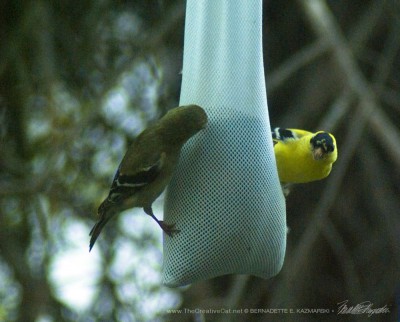
These tiny brilliant yellow birds nest only in summer, June or July, they build their nests when milkweed and thistles bloom, using the down to line their nests, and fledging their young and beginning their migration as the seeds mature, along with other tiny seeds from native composite plants such as echinacea (purple coneflower) and asters.
It may seem that all birds are vegetarians because we feed them seeds, but most birds’ diets actually include a large number of insects and, thanks to birds keeping mosquitoes, gnats, fleas and other pests under control, those insects are protein sources. But goldfinches are the strictest vegetarian birds, only occasionally eating an insect, so high quality native seeds are important, hence the nyger or thistle seed sold along with feeders that dispense the tiny seeds to attract goldfinches. Adding a thistle sack or thistle feeder now while parent birds are trying to keep up with hungry hatchlings would definitely attract them to your yard.
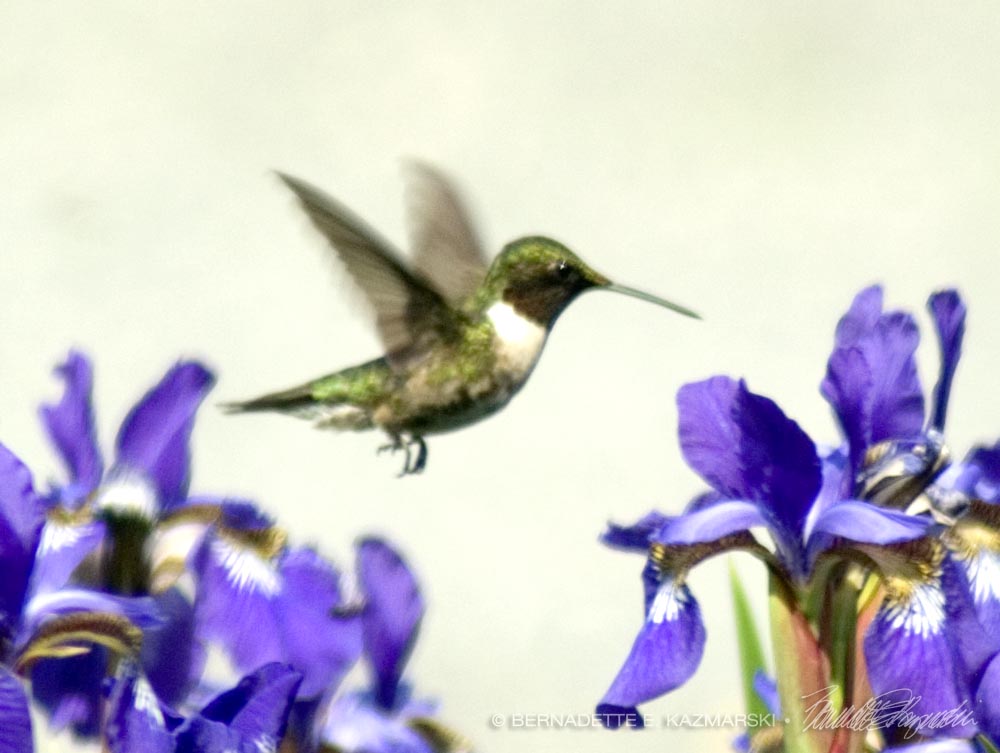
Don’t forget hummingbirds
With a need for high-energy nectar simply for daily needs, imagine what they need to fly every day and find enough to replenish themselves from the current day and sustain themselves for the next day. And yet, like all birds, they can’t really “stock up” because they have to keep their weight at a minimum to be able to fly without weighing themselves down.
Keep your hummingbird feeders in the shade, and often I will only add a half cup of nectar when the weather gets hot so a feeder full doesn’t spoil before it’s all used up. While other birds have plant seeds and insects they can eat, not as much is out there producing nectar the hummingbirds can eat. Unlike other birds which migrate in flocks, hummingbirds are solo fliers and will visit feeding sites individually, further complicating their ability to find food promptly because they tend to be territorial.
The most important—water
But a water source is just as important as the food and even more of an attractant, since flowers and seeds and insects are everywhere, but water sources can be scarce especially in the dry heat of summer. Keep your birdbath full and try to have more than one, and even one on the ground for critters who dwell on the ground. Again, keep them in the shade so the water doesn’t get hot, and dump them out and clean them every few days or even more often so that algae doesn’t bloom and mosquitoes don’t breed.
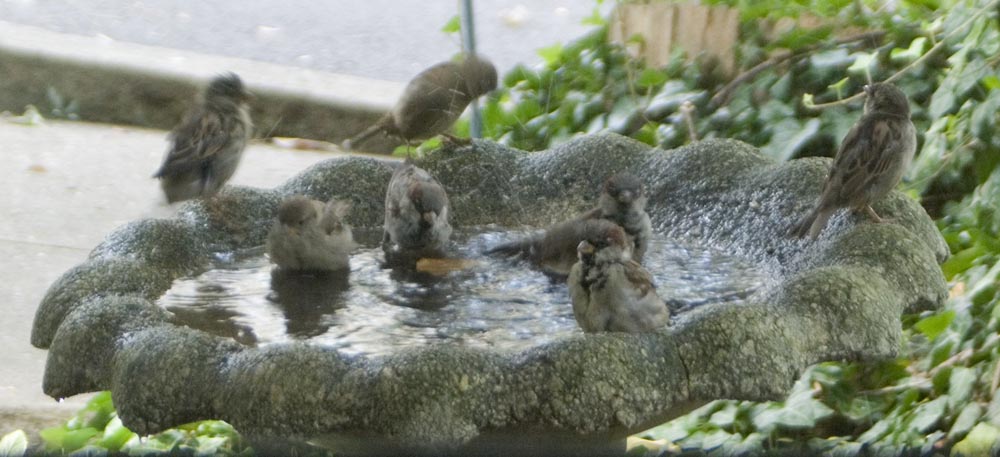
Providing for butterflies—water and sunlight
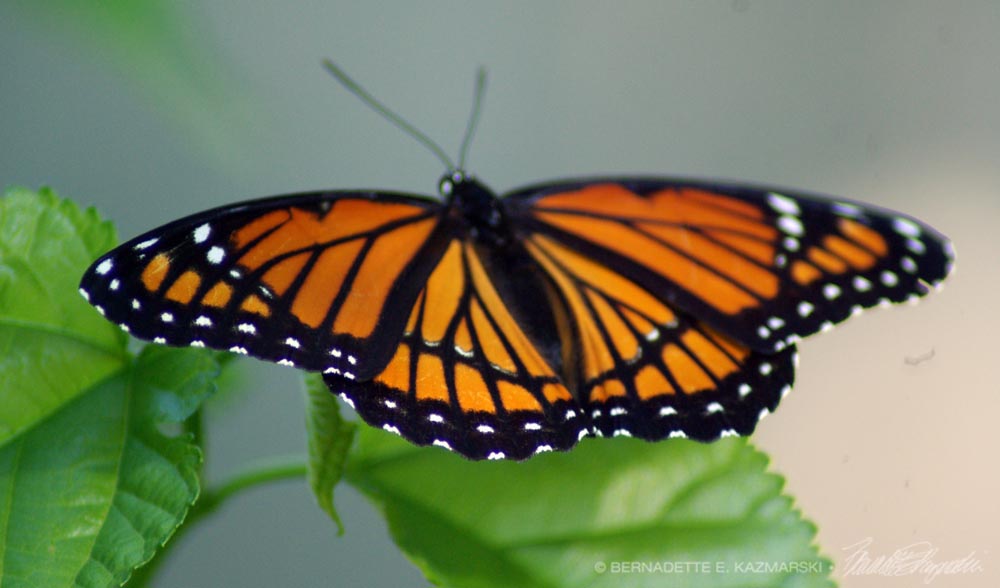
Every living thing needs water, butterflies included. They’ll drink dew and rainwater, and certain life stages get moisture from what they eat, but especially in midsummer when things tend to dry up it’s good to supplement this. Most of us have bird baths and we can see how birds use them, but how do we make water available to our butterflies?
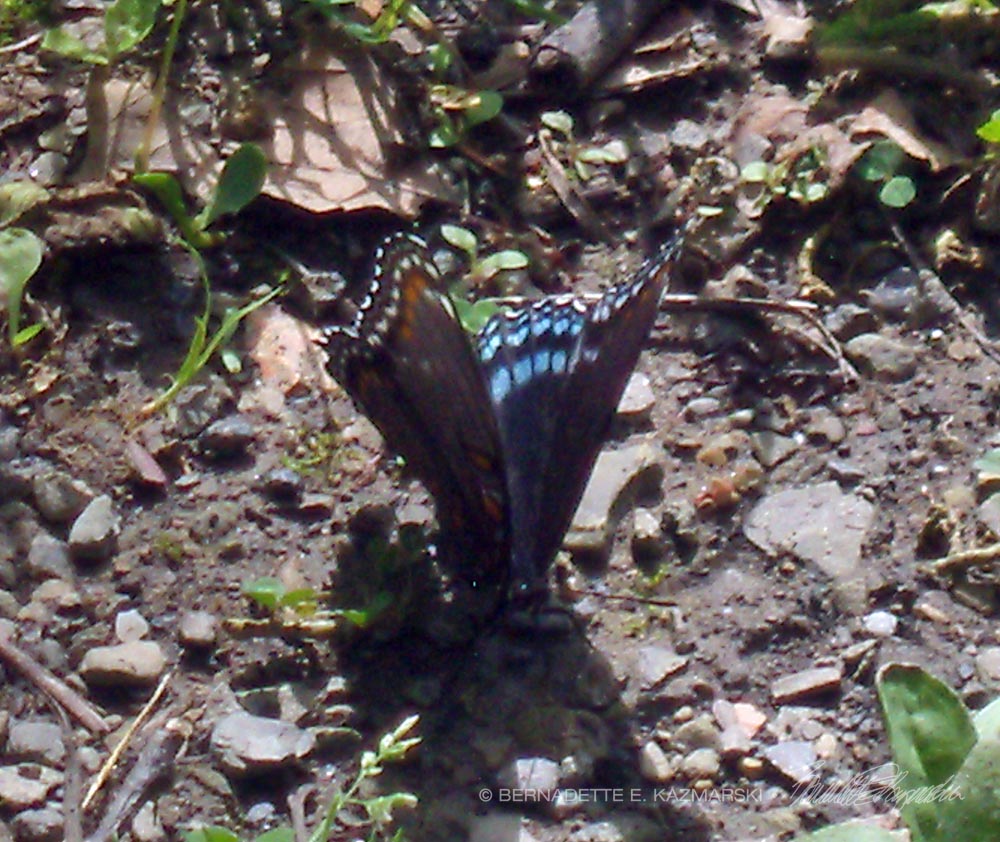
One of the ways I’ve done this for butterflies and bees and other beneficial insects is to sprinkle the garden early in the morning during the hottest days of the year when there has been no rain. This is not a heavy watering, and much of the water won’t even reach the ground but so that the leaves of the plants are covered with water droplets. Bees and butterflies and other insects land on the leaves and drink from the droplets.
Aside from that you can set around little watering dishes that consist of a flat container an inch or so deep, filled with pebbles or medium-sized rocks. Pour water into this so that it fills in around the rocks but does not cover them. Butterflies and bees will land on the rocks and sip between the rocks.
Another way to do this is to provide a “puddle” for butterflies to congregate. If a shallow puddle is in soil they can absorb minerals from the soil. You can also create a space for them with another shallow pan that contains coarse sand, settled into the soil in your yard, and kept moist.
Adult butterflies also need places to rest and orient themselves in the sun. You’ll often see a butterfly on a leaf or a rock or your deck railing with its wings completely spread, holding very still. They will orient themselves by the position of the sun and rest, warming their wings.
Plus, all that is out there will provide lots of entertainment for your cats, which might sound like a luxury but it’s a very important element in an indoor cat’s daily life.
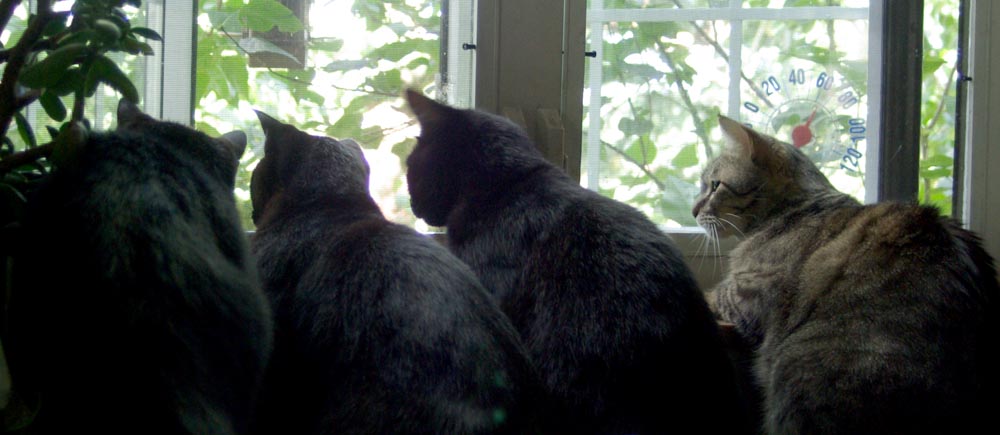
For more information on welcoming butterflies to your backyard wildlife habitat, read Your Backyard Wildlife Habitat: Planning a Butterfly Garden. For more information on naturally controlling fleas in your yard year round, read Your Backyard Wildlife Habitat: Fall Cleanup, Bird Feeding and Fleas, and also Your Backyard Wildlife Habitat: Begin in Spring to Control Fleas.
Backyard Wildlife Habitats
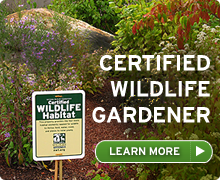
My backyard wildlife habitat was certified through National Wildlife Federation’s program in 2003, and their site is still one of my favorite references for information. Visit and read about it, and begin planning your own and be certified!
. . . . . . .
Read the entire series of introductory articles:
An Introduction to Backyard Wildlife Habitats
What’s in Your Backyard? The First Step in Planning Your Backyard Wildlife Habitat
What Else is in Your Backyard: The Fauna That Fill It
Bringing it All Together: Enhancing and Developing Your Habitat
. . . . . . .
Also read about my art, photography, poetry and prose inspired by my backyard wildlife habitat:
Art Inspired by My Backyard Wildlife Habitat
Photography Inspired by My Backyard Wildlife Habitat
Poetry Inspired by My Backyard Wildlife Habitat
Prose Inspired by My Backyard Wildlife Habitat
Or just read other articles in the category of Your Backyard Wildlife Habitat
All images and text used on this site are copyrighted to Bernadette E. Kazmarski unless otherwise noted and may not be used without my written permission, although links to your site are more than welcome and are shared. Please ask if you are interested in using and image or story in a print or internet publication. If you are interested in purchasing a print of an image or a product including it, check my animal and nature website Portraits of Animals to see if I have it available already. If you don’t find it there, visit Ordering Custom Artwork for more information on a custom greeting card, print or other item. Subscribe to The Creative Cat Preview E-newsletter. © 2022 | www.TheCreativeCat.net | Published by Bernadette E. Kazmarski Weekly schedule of features: Sunday: Essays, Pet Loss, Poetry, The Artist’s Life Monday: Adoptable Cats, TNR & Shelters Tuesday: Rescue Stories Wednesday: Commissioned Portrait or Featured Artwork Thursday: New Merchandise Friday: Book Review, Health and Welfare, Advocacy Saturday: Your Backyard Wildlife Habitat, Living Green With Pets, Creating With Cats And sometimes, I just throw my hands in the air and have fun!

Copyright
Subscribe to my e-newsletter
PORTRAITS OF ANIMALS WEBSITE
FACEBOOK | TWITTER | LINKEDIN | PINTEREST | TUMBLR | INSTAGRAM | YOUTUBE| EMAIL
| PATREON
Subscribe to The Creative Cat on your Kindle
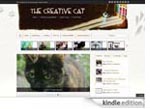

Start with a 14-day free trial. You can cancel at any time during the free trial period. If you enjoy your subscription, do nothing and it will automatically continue at the regular monthly price of 99 cents. Click here to subscribe to The Creative Cat on your Kindle.
© 2016 | www.TheCreativeCat.net | Published by Bernadette E. Kazmarski
—
Weekly schedule of features:
Sunday: Essays, Pet Loss, Poetry, The Artist’s Life
Monday: Adoptable Cats, TNR & Shelters
Tuesday: Rescue Stories
Wednesday: Commissioned Portrait or Featured Artwork
Thursday: New Merchandise
Friday: Book Review, Health and Welfare, Advocacy
Saturday: Your Backyard Wildlife Habitat, Living Green With Pets, Creating With Cats
And sometimes, I just throw my hands in the air and have fun!
—

